Power Extension Blocks – Serial or Star-wired?
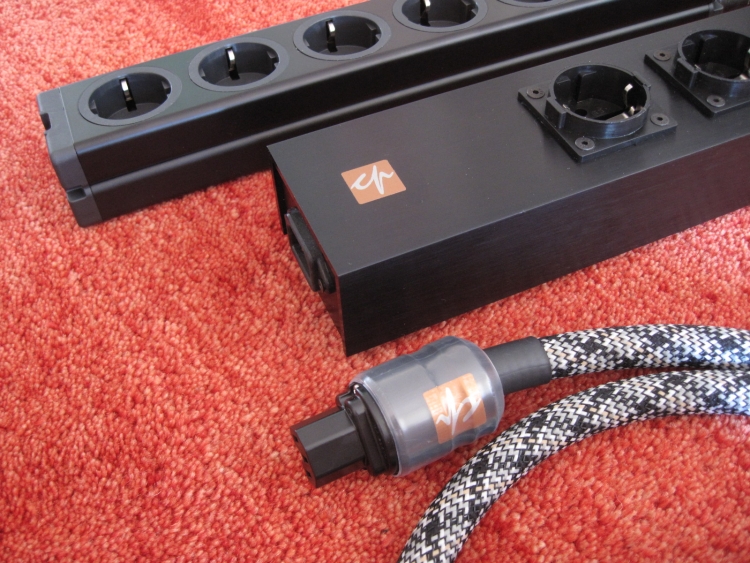
Basics of normal (serial) and star-wired power extension blocks
Most normal (serial) power extension blocks have two or three internal brass strips that connect the inlet to all the outlets in a single run. This means that all outputs are in normal, series connection. This does not have to be a bad thing, though; it can actually have its advantages.
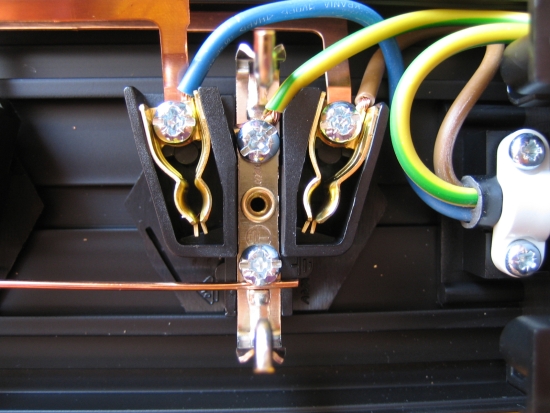
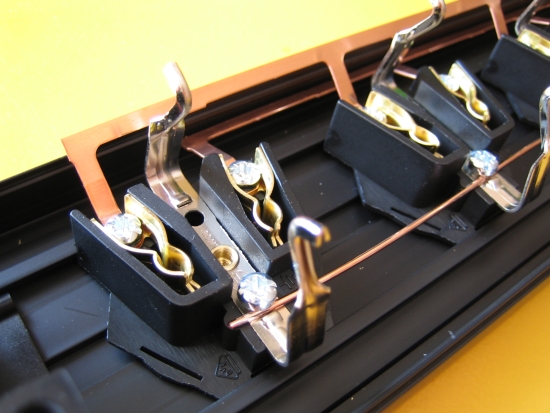
Above: a simple and affordable (~30 euro) serial Apsa block. The inlet or the main cable connects to the clamps of the first socket, and from that point on the power is carried across by brass (or another metal allow) strips. Although the strips look like copper, the block itself sounds comparatively harsh.
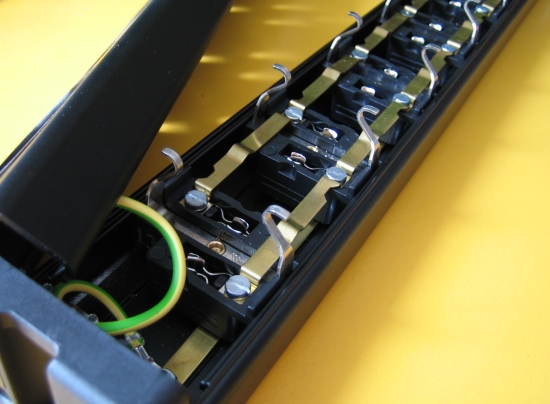
Above: one step up from the Apsa block above, a 60-euro serial Popp block with aluminum housing. I don’t know what kind of conductor material is used for the conductors or the clamps, but it is definitely no copper. Yet, compared to the Apsa block above, this block sounds airier as well as more refined and fluid.
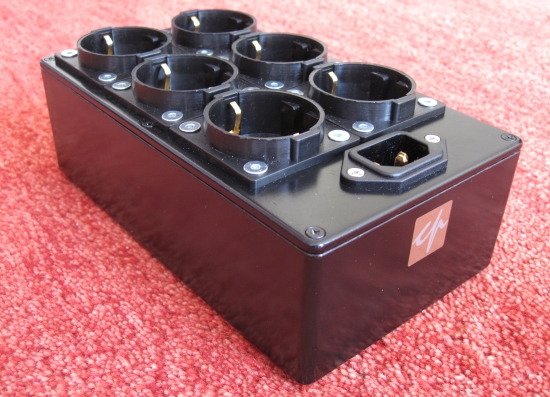
Above: a CP-Audio star-wired extension block
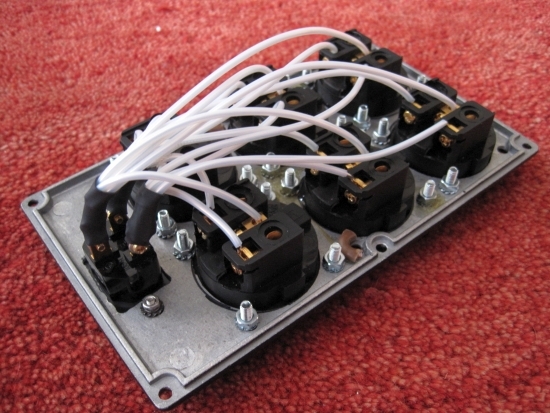
A star-wired power extension block has individual connections from the inlet to each individual socket. These connections could still be made with brass strips but that is very uncommon. More often the internal connections are comprised of solid-core or stranded wire, and it is not uncommon to use audio-grade wire such as OCC copper, silver or a combination of metals for this application. The length of the wire should be the same for every connector. I found this out after assembling the block as pictured above, where the connectors closest to the entry with the shorter wires sounded more articulate than the others. The next block I made (see below) utilized same-length cables for all outlets.
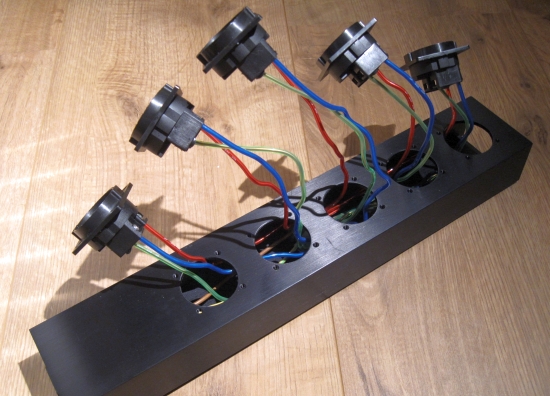
Advantages and disadvantages of Standard serial power extension blocks
Because the sockets are serial, only the first appliance in line has the most direct power supply. In this position, the connected audio component will sound most rich and powerful, with most attack and most liveliness. For every position you move back from the first position, the sound will be increasingly less full and lively. Importantly, this is not only true when connecting a device on its own which is caused by the length of the conductors, but when connecting multiple components, they all interact with each other. So when moving backward in the extension block, the other appliances and the capacitance of their power cords that are plugged in ahead of the component in question also have a large effect on the resultant overall sound.
This disadvantage can however actually be a surprise advantage! You will be able to tune your audio equipment as you wish; an appliance that needs a richer and more powerful sound can be placed in the first position, “in front of” an appliance which you want to tame slightly. Each successive component loses a little in terms of a powerful delivery, becoming ever thinner. This can be a bad thing, or a good thing, depending on your taste, the sound of the setup and the desired result.
Please note that it is not a rule that a power amp needs the most power and therefore must be placed in the first position of the extension block. This could very well work under some circumstances but the amplifier’s great capacitance might also mellow the following components’ sound to a very noticeable extent.
Advantages and disadvantages of star-wired extension blocks
There are three distinct advantages to the star-wired power strips. First: the wiring; more often than not, much better quality conductors are used. Most wire sounds more natural and relaxed than the brass or undefined alloy power strips inside normal extension blocks. Second: the star-wiring principle, particularly its ground wiring, allows the system to achieve better soundstage focus. Third: all positions in a star-wired extension block are equal and this means that you do not have to worry about where to plug in your appliances.
There is only one disadvantage you cannot tune your set-up by changing the order of connections. But it probably saves you a big headache!
Conclusion
It’s boring to state, but as is often the case in audio, there is no real right or wrong. There are however large differences among extension blocks of the same type, and even more so when comparing normal (serial) extension blocks with star wired extension blocks. It is important to know the mechanisms behind them and the way that they influence the sound of the system. Also, it is important to be aware that every power cable connected to the extension block, whether connected to a device or not, influences the overall sound of the system. By carefully choosing how to connect your system’s components you’ll be able to very accurately fine-tune your system.
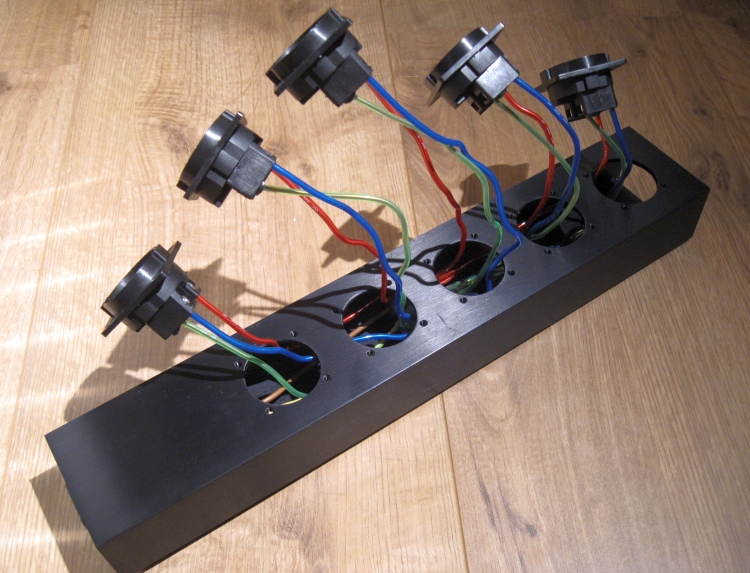
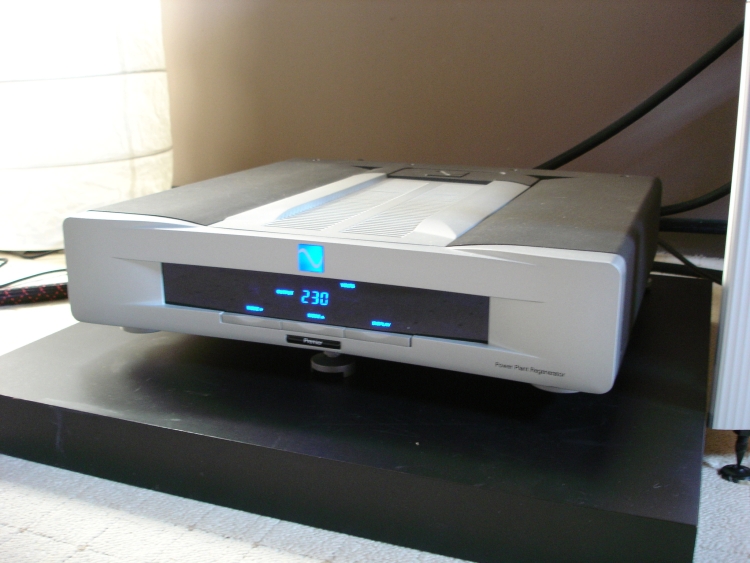
Christain:
RE:Second: the star-wiring principle, particularly its ground wiring, allows the system to achieve better soundstage focus.
Have you verified that by consistent, time-honored observations?
Also, you accurately state:
“” It is important to know the mechanisms behind them, and the way that they influence the sound of the system. Also it is important to be aware that every power cable connected to the extension block, whether connected to a device or not, influences the overall sound of the system. By carefully choosing how to connect your system’s components you’ll be able to very accurrately fine-tune your system.
( Indeed, nicely articulated. A very important, but often over-looked component to Hi-Fi systems ).
A fine review !
peter jasz
Better soundstage focus is usually obtained by earthing compared to not earthing anything. Star wiring (incl earth) is the next step up. All circumstances being equal, an extensionblock with star-wired connections (incl earth) can sound more focused than a parallel-wired extensionblock. I have observed this in the time that I made and sold extensionblocks myself. However this is not a rule as very many other factors come into play.
Hi Christiaan, do you know of any good sounding extension block (star wired maybe) you can buy ready-made. I don’t care for power conditioners or filters. In my experience they don’t improve the sound. I just need more electrical sockets instead of the one I have. Thanks
Hi Bie, I agree that conditioners and filters generally do more harm than good, although opinions on this vary and I guess it is very dependent on the situation and system at hand. Personally, I have stopped using high end extensionblocks many years ago and use good quality standard ones (parallel-wired with brass strips) with aluminum enclosures by the name of Popp but I’m not sure if these are still available. They are approx 60 USD for a 6-outlet version. If you want one that improves perceived detail and low-level resolution but avoids sounding harsh or bright and remains neutral then Vibex is the first brand that springs to mind. There are many more that could be interesting but I’ve not auditioned any recently.
Hi Christiaan. I’m pretty much looking for the same power distributor as Bie. A star-wired distriibutor with an aluminum chassis, OCC wires and no filtering.
Can you explain why you went back to a parallel-wired distributor with brass strips? I read your article on the advantages and disadvantages of each type, but brass strips seem to be a step backwards. Obviously, partnering has a lot to do with it. Which benefits could a brass strip have over OCC wiring?
For me and my system, OCC is making the sound too mellow and relaxed. Brass strips are by no means ideal but at least they do not have the slowness that OCC typically incurs. What I found is that the brass strip is really quite good initially but the sound becomes increasingly darker as the metal of the strips ages. More ideal would be pure copper bars that are coated after being connected but that’s very hard to realize. What I am currently using are modified Pawalle TP80 distributors from China with all filtering, switching and fuse removed, and IEC and Schuko sockets replaced. Basically, I started with a case only. For inlets and outlets, you can use Furutech, Oyaide, or even imitation Furutech, anything will be better than what’s installed at purchase. Do note that all socket brands and even types have their particular sound so you need to choose something that fits your system and taste. Rhodium plating typically sounds cleaner and more open but also leaner and slightly cooler while gold plating typically sounds fuller and warmer if not quite as articulate and open. Initially, I used solid-core installation wire which provides great solidity and a robust and impactful sound but with a bit of thickness and a mild darkness. What works even better, and what I use now, is 2mm solid-core Block enameled transformer wire to connect the internal sockets. This has the same solidity as installation wire but with more expression and openness from the midrange up. I think this is mostly thanks to its almost absent insulation leading to very low capacitance versus the installation wire’s very thick PVC sleeve.
Hi. As an electrical engineer, and I’d like to add my 2 cents if I may.
Technically, those ‘serial’ connections you’re talking about aren’t serial at all. If they were serial, you’d have the neutral connector of one outlet connected to the hot connector of the next. They’re parallel, just like your ‘star’ connections.
The difference however, as you sort-of touched on, IS the length of the conductor. A ‘star’ connection layout, with different length wires would be (and is) IDENTICAL to a regularly wired block. The audible differences you are hearing is caused by impedance/inductance variances caused by those different lengths, AND other influences, such as voltage variances caused by the loads themselves.
You are right, or course. It is all parallel wiring. When speaking of “serial” I am referring to how the wires connect to the first outlet and from there to the next, etcetera, rather than being connected directly. I understand that it’s technically no different but am trying to illustrate the situations. Besides the influences that you mention I have also found that the materials that are used for the conductors make a difference. Especially solid nude bars of alloy materials have a different influence on the sound than litze wires insulated with PVC, for example.
You are actually just beginning to touch on one of the more influential issues! Just as important as length is shape and material. Anyone who’s built ham radio antennae knows this all too well. Different materials not only conduct electricity [slightly] differently, but are also subject to electromagnetic interference to different degrees. The other major issue, of course, is voltage, which I think may being overlooked in this case. Say you’ve got two loads plugged in; an amp for HF and an amp for LF are plugged into the same strip. When the bass kicks in, that LF amp is going to suck up voltage fast, causing the HF amp to possibly see less than optimal voltage for a brief period. This is where the in-wall wiring (length and gauge) are so important. When the HF amp has less than optimal voltage, it will sound similar to your descriptions in your article. This voltage issue is far more predominant in, say, upstairs bedrooms, where you are the farthest distance from the breakers. Just some things to keep in mind. Also, ears are OK for testing, but they usually lie to you. If you really want to ‘see’ what you’re hearing, invest in a good oscilloscope and mic.
Hello all!
Very useful & interesting article! In fact, i am very interested in anything affects the sound (music) and specially the Power’s “things” because i believe from here it starts everything! There are so many people (not only hi-fi enthusiasts or audiophiles or..music lovers, either mechanical-electrical engineers) that they they don’t share the same worries! Some even don’t agree that the phase orientation has any impact!!! It’s a pity, because they miss so much…and they don’t understand how things work! Not only that, but audio is even more complicated. because of the psychoacoustics reasons! So, how can someone deep more in this, if they can’t even the basics understands? I am totally engaged to this, and i have noticed different in …almost anything i have “touched”. From different electrical outlets —> To (just) different position of the cables…including anything between them (power cords, interconnects, speaker cables, speaker stands, usb cables to Dac, the devices that are working when i play music, in the house… etc.
HAPPY NEW YEAR!
John
Interesting, but as a non-electrical expert, but an experienced mechanical and equipment expert I would verge towards higher standard wires and screening; why is earthed screened cable not used here, I beleive this would make the biggest difference. For the real high-tech oscilloscope stuff we even get down to the screen braid pattern and angle. Oxygen free is valuable in very low resistance speaker circuits but at mains power with mixed clarity siugnals screening is more valuable surely?
Hi Andrew, Indeed, screening is an important factor and it certainly makes an audible difference. Usually, it results in additional definition or a cleaner sound. However, I found that it is not necessarily a necessity, especially not for the cables leading to the extension block. I agree that, although they can be used to tweak the sound, OFC or even OCC wires are not required for power cables, at least not for the cables leading to the extension blocks. I prefer plain solid-core installation wire for the extension blocks and Belden 19364 for the components. I did try the screened version of the installation wire but its altered geometry and more copious use of plastic made for a fatter/less crispy sound and so I stuck with the non-screened cables. All that said, I noticed time and again that the factors that most influence how a power cable sounds are geometry and dielectric material. Screening helps, but I found that it does not really alter a cable’s character. Star-wiring versus “regular”, finally, is more a matter of preference and fine-tuning. Although star-wiring is theoretically better, I prefer regularly-wired extension blocks because they allow me to tweak the sound by changing the order of the components’ power cables.
Hi Christiaan,
I trust you’re well. I can’t find CP-Audio on the web. Is there a star-wired option at a lower price point than Vibex you would recommend?
Best wishes,
Jason
Hi Jason, CP-Audio stopped quite some time ago. Gigawatt (Poland) makes great power products. They contain filtering but are rare for not compressing the dynamics.
Thank you again Christiaan!
Hi Christian,
I hope you are still following the topic. If this is the case, could you please tell us how you managed to solder together 6 power cables to each of the IEC pin ? Did you use a connector or are they just soldered together to the pin ?
Thank you !
Hi Emil, I used 2,5 mm2 solid core wires which are impossible to solder all to an IEC inlet. So, I used a two-step method. First, a single set, soldered to the IEC inlet after which the cable splits into multiples using a wire nut (lasdop). Even if the wire nut is considered old-fashioned, to this day, it provides the best sound because it simply holds all the cable ends together and in direct contact. See this article that shows images of wire nuts and the modern but inferior-sounding alternative.
Thank you for your quick answer !
Hi Christiaan,
Currently I’m using a Isol-8 Minisub Axis (mainsfilter). But I hear allot of people in our country using hospital grade isolation transformers. During the day I measure 1000mv on the WCD, 1000mv on the high current socket and 200mv on the Mid/Low.
My setup is Audio Note OTO, pure class A single endend 2x10w, so the power request from the transformer should be quite consistent is my guess? I’m also using a AN Dac3.1x/II and a streaming setup.
For now I can’t make adjustments in the fusebox, so I’m using a standard Hager ‘schakelautomaat’ from here 20metres cable to my rig.
Do you think a isolation transformer behind my rig will be better with a unfiltered aluminium powerbar?
I’m also thinking of making sockets straight in the housing for the transformer, would you make the housing from metal/ Alu for better shielding or is wood also good in this situation?
Hi Nick, I am personally not a fan of using isolation transformers as they tend to round the transients but other people claim successes so I guess YMMV. Indeed, Class-A tends to draw a more continuous current than Class-AB but that does not mean that the amps are impervious to the quality of the power upstream. My gut feeling is that, especially with tube gear, you likely get better results using power directly, without isolation transformer. The Hager schakelautomaat is really not bad IMHO. It does sound a little lean compared to some other audiophile solutions such as the Gigawatt and Doepke but one can ask whether those provide a truly neutral presentation and the Hagers are lean/bright or the Hager is just passing on neutrally and the audiophile solutions add color and richness. Either way, this is very much a personal matter. I have settled on using Siemens Sitor and direct installation wire connections to three Gigawatt outlets behind my system. Do also read the GigaWatt reviews for more info on that and more. As for housing of wood or metal, this is also a personal matter but I would say it is of less consequence than other factors such as interruptions in the wire and the plating of the conductor materials in the outlets.
Hi,
I have a silver plated Pro-Elec six socket mains block with standard ‘Daisy chain’ strips connecting the live neutral and earth to each. The feed cable is a 1.5 metre length of Belden 19364 with a silver plated MK toughplug. My Rega system sounds very good with the amp plugged into the wall and the other components (DAC, Phono stage etc…) connected to the block.
However, in line with what I believe you’ve experienced, I’ve found that a component sounds noticeably more dynamic, having greater authority and presence when plugged into the first socket in the block than when I connect to the second, third, fourth etc..
Then I tried an experiment; I removed the three wires from a length of Lapp CY 110 3 x 4.0 mm cable and used these to connect from the end of each of the chains back to its corresponding live, neutral and earth terminals (using soldered connections and heat shrink sleeving at each termination for safety) thus creating a ‘ring’ configuration.
The result appears to be a massive leap in performance – Greater authority, weight, control, speed and transparency to the sound. Nuances and textures which were previously lost in slightly congested bass are now separated and easily audible. The soundstage has widened and everything just seems much cleaner than before. Bass has more punch with less boom and overhang and I’ve noticed that the slight harshness in the upper treble has disappeared, being instead smoother and more detailed.
What’s more, there is now far less of a difference in sound between sockets!
Furthermore, using the same Lapp 4mm wire, I then made an additional connection at the half-way point along each of the rails between each group of three sockets back to the their corresponding input terminals.
Again, a further improvement in all the areas mentioned above, but this time with even less of a difference in sound between sockets.
Overall, this mains block modification would seem to be one of the biggest upgrades I’ve made to my system.
I did a comparison this and a highly respected Merlin Funnel web block (which uses a fully start wired configuration) and this modified Pro-Elec appears to outperform it in every way, especially in terms of authority, pace and rhythm.
Have I made a new discovery? I suspect not, especially as I’ve found online that the esteemed Musicworks G3 ultra 6-way mains block (costing £1600) is wired in the same ‘ring’ configuration for live and neutral but with wires used between sockets instead of strips. It does however have star earth wiring.
I’ve not been able to compare the modified Pro-Elec with G3 and would expect the G3 to be better considering its cost and construction.
Nevertheless, I think this suggests that there are some dramatic improvements that can be made to the performance of a cheap rewire able block for minimal additional outlay.
I’m wondering if you’ve ever experimented with further wiring to a basic mains block and if so, have you reached similar conclusions?
Have you ever compared ring with star wiring? If so what have you found the sonic differences to be?
Your comments would be appreciated.
Best regards,
Steve
Hi Steve, I am not a licensed technician, or even technically a technician per se, but I suspect the “ring” procedure may be violating code. Even if it works seemingly just fine and helps the SQ, it may be best to check if the regulations to confirm if this could not lead to a dangerous situation. I would suggest using star-wiring instead. Interesting discovery, nonetheless! And, I agree 100%, simple blocks can be made to sound A LOT better by using good conductors.
Hi Christiaan,
Many thanks for your response. I’ve removed the links from this message to stop it being marked as spam.
Somebody has opened up a Musicworks Ultra G3 block and a picture of the wiring can be found at the Naim Audio community forum. (link removed)
It uses a ring configuration for the live and neutral but star wiring for the earth which gets me thinking that this configuration is compliant with the code here in the UK.
Mine is certainly different though in that, although it’s a ring I’ve left the silver plated brass inks in place.
Just for info – The Pro-Elec silver plated mains block is supplied by MCRU (Mains Cables Are Us).
On its own as a DIY solution for users to install their own cable (link removed) or with a length of Belden 19364 (link removed).
Just to be safer though I might try some proper silver plated double sockets (link removed) then add metal back boxes and wire these in a ring formation with star-earthing and have some Belden 19364 as the main input and see how that works.
Perhaps I could have a fully star wired version to hear what the difference it makes.
Trouble is, that would all take up far more space and would also be an expensive solution so I’m not sure my wife would be so happy…
Best regards,
Steve
Hi Steve, Just as a heads up: please note that silver plating tends to corrode very easily, which changes its characteristics. Although silver oxide conducts very well, the sound will change over time, from initially crisp and direct toward the softer, gentler, and more relaxed side, usually withing a few months to a year of use.